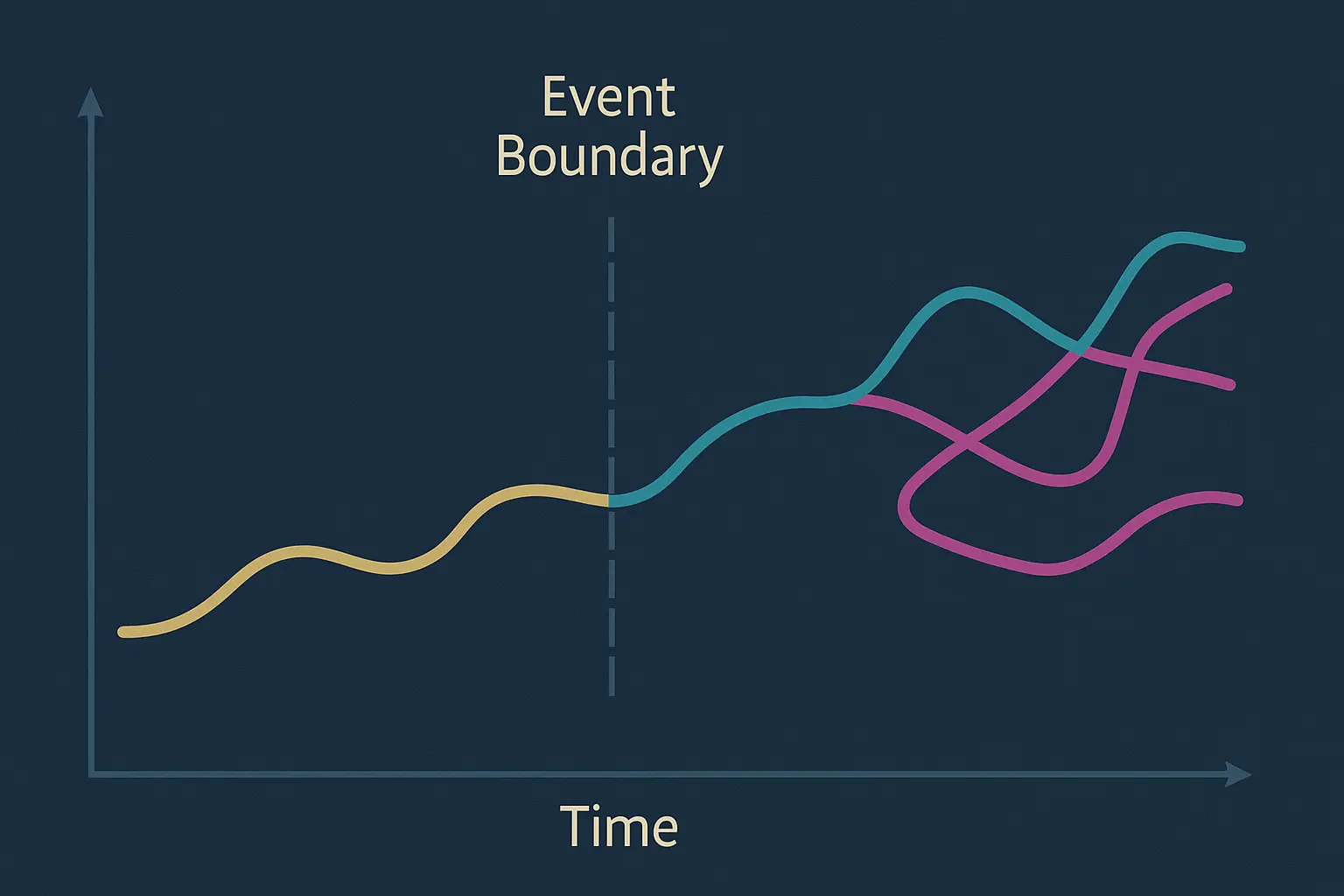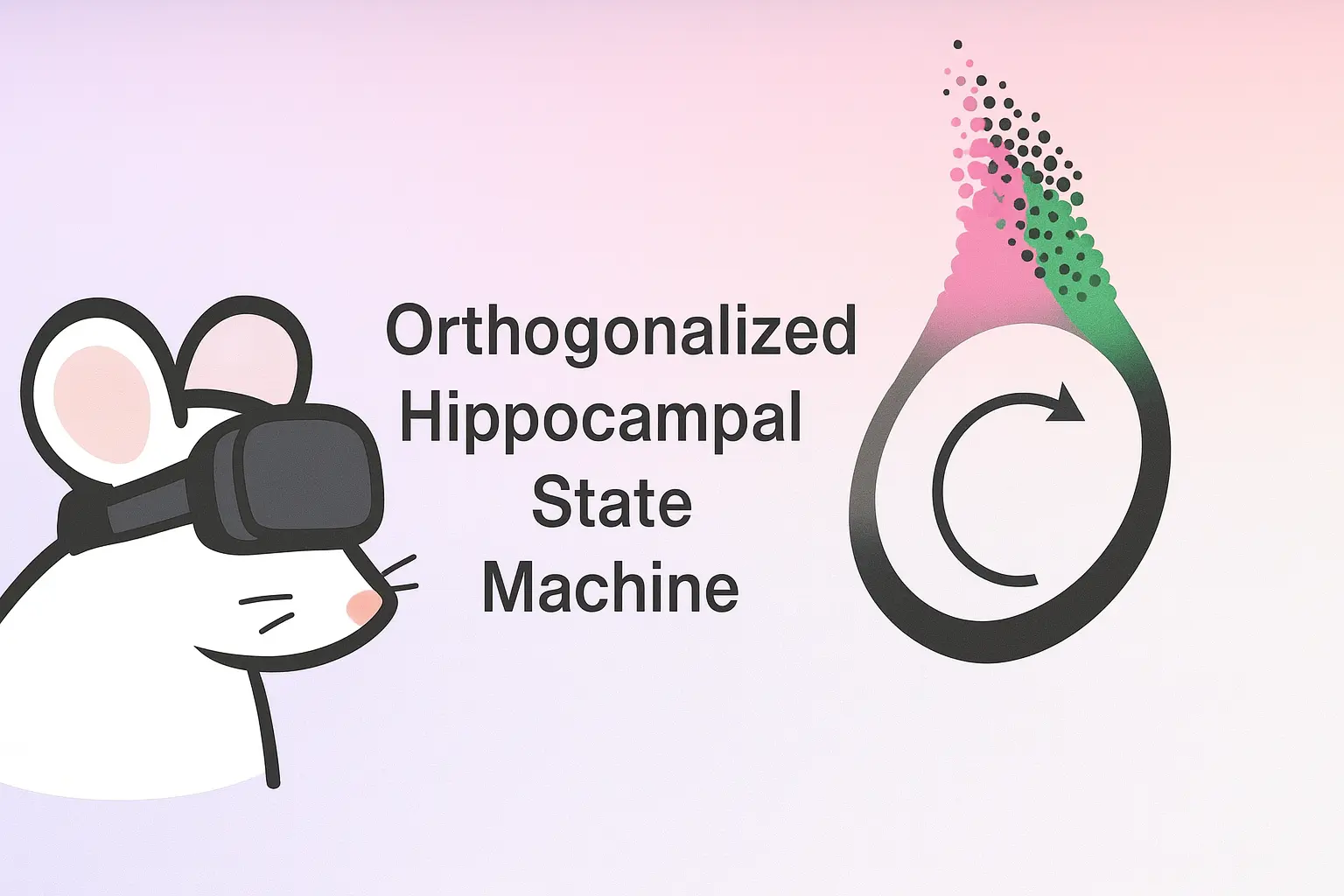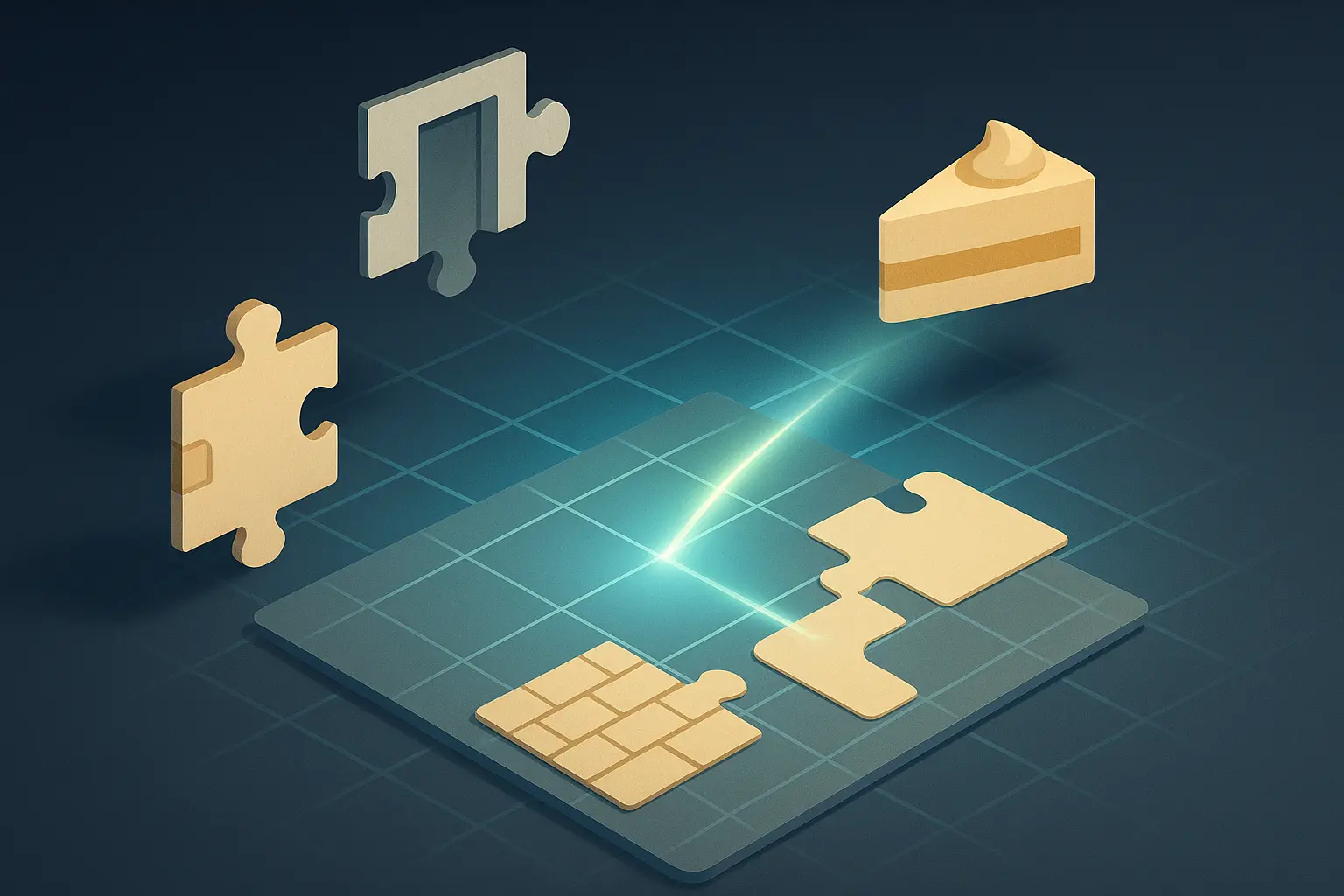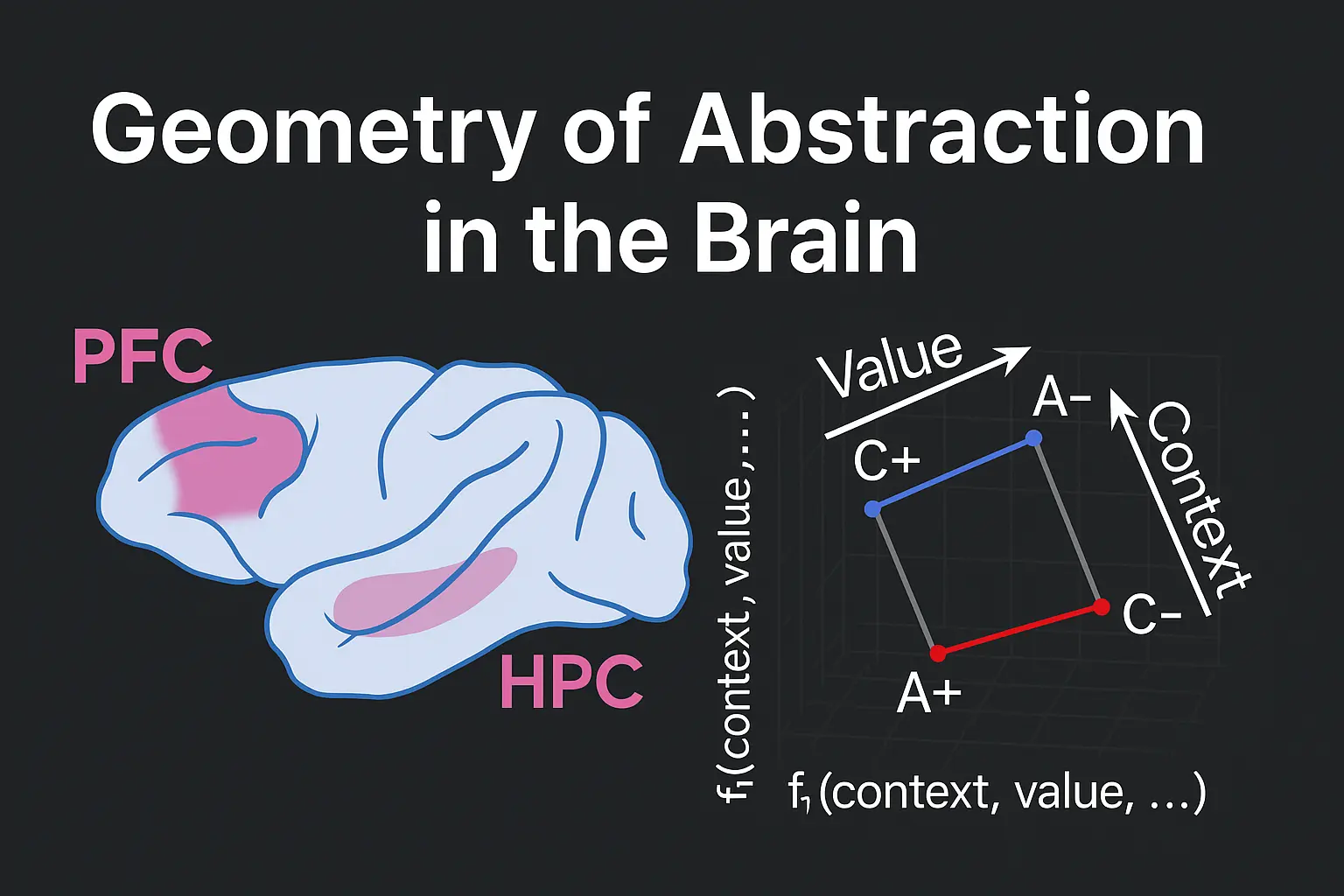Vector Hash Memory Model
The VectorHASH model separates memory content from a fixed, stable scaffold derived from hippocampal structure, integrating episodic and spatial memory
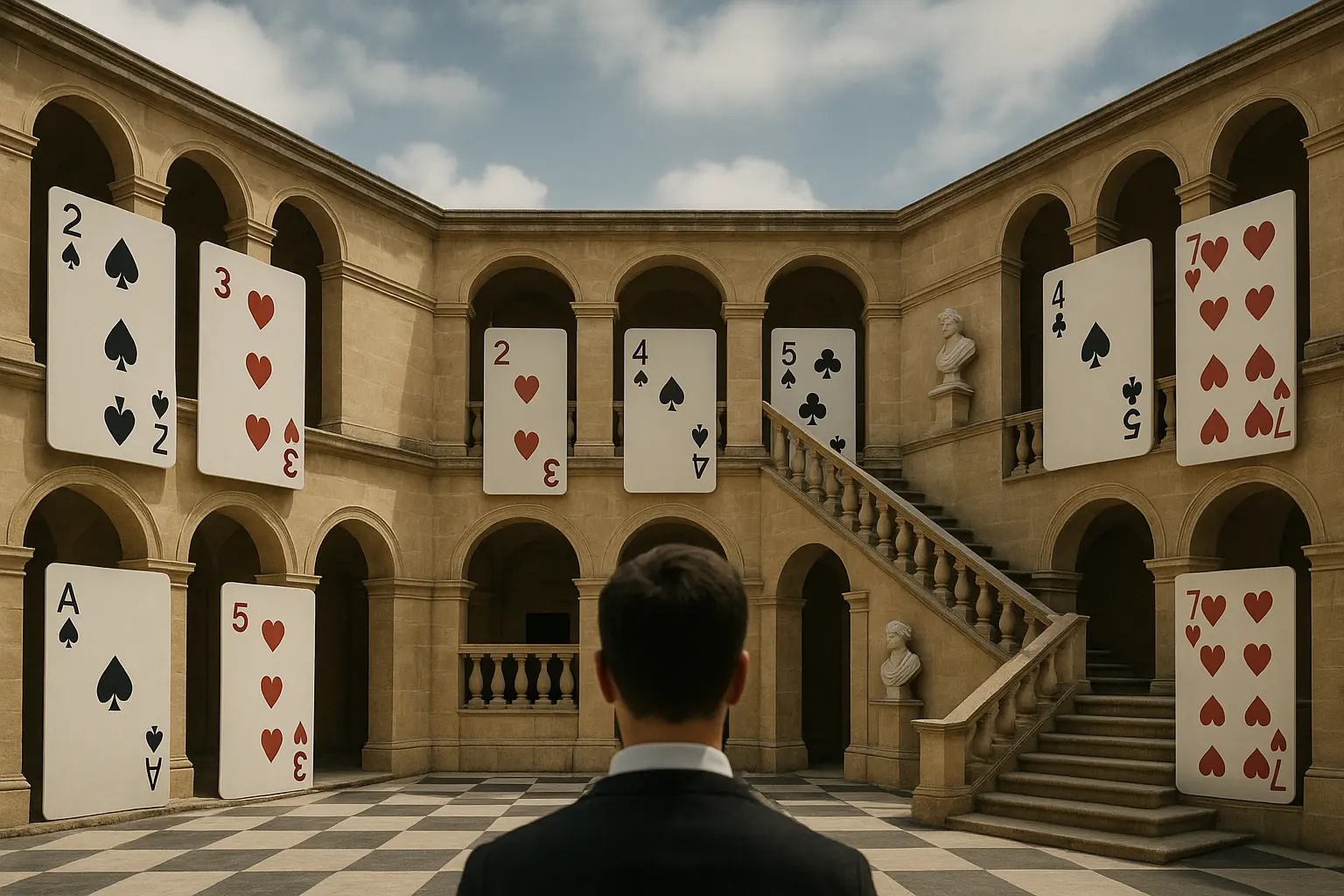
Original Paper: Vector Hash Memory Model
The presentation summarized a new model called VectorHASH (Vector Hippocampal-Scaffolded Heteroassociative Memory), how episodic, associative, and spatial memory can arise from a common hippocampal scaffold.
Summary of the Paper (VectorHASH Model)
Core Problem and Solution
- Traditional memory networks (e.g., Hopfield Network) suffer from the Memory Cliff: recall accuracy drops abruptly to zero once storage slightly exceeds neuron count.
- The VectorHASH model avoids catastrophic failure by providing a memory continuum—recall that gradually degrades near capacity, staying close to the theoretical limit.
Key Architectural Concepts
Separation of Scaffold and Content
- Scaffold = stable structure (coordinates, grid cells).
- Content = variable memory (sensory input).
- Architecture grounded in biology: Sensory Input Layer + Hippocampus + Grid Cells in entorhinal cortex
- EC → HC connections: fixed and random (scaffold).
- HC → Sensory connections: plastic, experience-dependent.
- Heteroassociation: sensory input linked to hippocampal scaffold.
Low-Dimensional Encoding for Sequences
- Episodic memory stored via Velocity Shift Mechanism:
- Only changes are stored in a low-dimensional velocity vector (often 2D).
- Tracks grid phase shifts instead of high-dimensional states.
- Episodic memory stored via Velocity Shift Mechanism:
Performance and Capacity
- Robustness to Noise: Attractor recovery even with 25% noise in HC state.
- Exponential Capacity: Stable attractors grow exponentially with number of grid modules; HC neurons scale linearly.
- Gradual Degradation: Quality of recall decreases smoothly at high load (vs. collapse).
- Efficiency: Recall of sequences up to 14,000 steps, vs. ~53 for Hopfield.
- AI Comparison: Outperforms autoencoders in image recall fidelity → biological constraints as powerful inductive biases.
Spatial and Episodic Memory Functions
Spatial Functions:
- Place Cells & Grid Cells reproduced.
- Zero-Shot Inference for new paths.
- Supports remapping → distinct, non-interfering codes across environments.
Episodic Functions:
- Sequences maintained, but fidelity of sensory details decays with load.
Memory Consolidation:
- Repeated inputs strengthen HC→Sensory weights.
- Leads to stronger recall and resilience to HC damage.
Connection to the Memory Palace
- Method of Loci aligns with VectorHASH:
- Fixed palace path = stable scaffold.
- Linking items to locations = heteroassociative learning.
- Explains vast storage capacity of mnemonic strategies.
Summary of the Discussion
Inductive Bias and AI
- Catastrophic Forgetting Mitigation: Fixed scaffold serves as inductive bias.
- Scaling vs. Bias:
- Debate between brute-force scaling (vision transformers) vs. neuroscience-inspired inductive biases (convolutional neural networks)
- Robotics and constrained domains may favor bias-based approaches.
Neuroscientific Extensions and Implications
Beyond Hippocampus:
- Extended to Frontal Cortex (FC) → improved performance in reward-seeking tasks with positional + evidential information.
Sensory Input Modalities:
- Different modalities (visual, auditory, motor) may wire uniquely.
- Feynman anecdote illustrates individual modality dependence in cognition.
Early Fixed Learning:
- HC–EC scaffold connections set early in development, and do not change after that.
- Raises questions about critical periods in learning.
Pathology:
- Model relevance to Alzheimer’s disease and hippocampal dysfunction.
